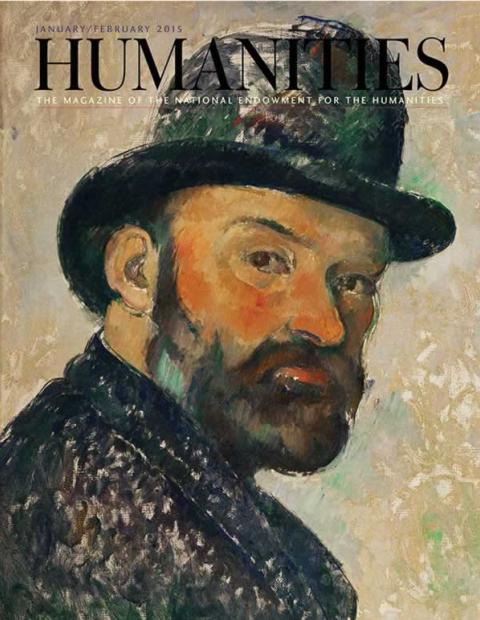“Innovate or die.” It’s the kind of future-is-nigh saying our age seems to produce with dulling frequency. You can get it on coffee cups, or on posters to hang in your office and intimidate your employees, who may be thinking instead about their vacation or what to pick up at the grocery store.
How do truly innovative people go about being innovative? I am not in a position to generalize, but I think it worth considering the method of Paul Cézanne, whose Post-Impressionist paintings helped usher in numerous schools of modernism. To what, we might ask, did Cézanne look for inspiration? The answer is the past.
As Nancy Locke writes in this issue, even as a celebrated artist in middle age, Cézanne spent countless hours at the Louvre, looking over and copying Old Masters. I know, what a mossback.
Recently, NEH announced a new effort that looks back to a major goal described in our agency’s founding legislation: to engage public understanding of the humanities. The initiative, a creation of NEH’s new chairman, William “Bro” Adams, is called The Common Good. Though still taking shape, its first offspring has arrived: the Public Scholar program, which aims to support book projects, in the humanities, that are likely to reach large audiences. One can imagine all kinds of potential applicants, scholars with a knack for writing for general audiences, independent researchers, professional writers who use scholarly methods, and so on.
James Thurber was a professional writer, but something tells me he would not get one of these fellowships. More likely to mock a scholar than pass as one, the great humorist of the New Yorker’s early years had a wonderfully breezy way of finding absurdity in the familiar. Danny Heitman explores his art and his life.
An exhibition at the New-York Historical Society puts visitors in the position of Chinese who have emigrated to America in spite of hostile laws and numerous other obstacles. A documentary on Italian Americans captures the trials and triumphs of the Europeans who gave us pizza and Francis Ford Coppola and Lady Gaga, who, Wikipedia tells me, was born Stefani Joanne Angelina Germanotta.
Carol Oja describes the bold (some would say innovative) casting of the original production of On the Town. Better remembered for its choreography and music, the wartime musical also featured a gorgeous, talented ballerina whose Japanese-born father was locked up, along with thousands of other Japanese Americans, following the attack on Pearl Harbor.
Some people find musicals unlifelike. Not me. As a parent, I do a lot of singing, especially to hasten the brushing of teeth and the eating of vegetables. And in reading a journal article by NEH research fellow Patrick Burke, I learned there was a field of scholarship in which such spontaneous music-making is considered normal human behavior. So, I quickly sent Burke a note asking him to explain. His answer will surprise you.

